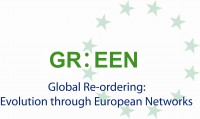Where Have All the Womean Gone? Women in EEAS and EU Delegations

Publication Date:
2014
Pages:
9
Item Reference:
GR:EEN Policy Brief 17
Publication Language:
EN
Copyright Year:
2014
Policy Brief Type:
Abstract:
On International Women’s Day, this policy brief examines the recruitment of women to leading positions in the European External Action Service (EEAS) in the Brussels HQ and EU Delegations. By closing down the gender gap, the EEAS will not only promote female participation in EU foreign policy-making, but also set an example for other parts of the world where women do not have equal opportunities. Despite the general progress made in ensuring the gender balance among the personnel in the EEAS and EU Delegations, this policy brief argues that:
- in spite of a female HR/VP, the EEAS key decision-making positions remain dominated by men with currently only three female top managers and with only between 11.8% to 16.7% of women in the EEAS senior management (from the directorial level up) since the launch of the EEAS until today
- although the numbers of female Heads of EU Delegations increased from 15.1% in 2010 to 23.2% in 2014, parity with male EU ambassadors remains far off. Either EU Member States can be blamed for shortlisting few good quality female candidates, or the EEAS recruitment procedures prioritize male national diplomats
- women who get recruited to be in charge of EU Delegations increasingly tend to have their background in the European Commission rather than in EU Member State diplomatic services
- French women, particularly in contrast to those from Germany and the UK, are most successful in competitions for EU ambassadorial posts, while, contrary to expectations, no Scandinavian woman has ever run any EU Delegation since 2010. Perhaps thanks to the post-communist egalitarian legacies, women from new EU Member States in Central and Eastern Europe have an above average level of representation as Heads of EU Delegations who are coming
- female EU ambassadors are disproportionately running more ‘soft-power’ EU Delegations to multilateral organizations rather than ‘hard power’ posts in Delegations to EU Strategic Partners
- female EU ambassadors are concentrated in Central Asia and Southern Caucasus and, primarily in the Middle East and North Africa
- Once a new, possibly male, HR/VP is chosen, he should continue in women’s recruitment and distribute them more evenly. Such a strategy will send a strong message to women both in the EU and in third countries.
Project:



